Japan is a land where time stands still—where age-old traditions effortlessly intertwine with the pulse of modern life, creating a harmony that feels completely natural.

Mount Fuji (Fuji-san) is one of Japan’s most iconic and sacred landmarks, celebrated for centuries in poetry, paintings, and pilgrimages. Despite its last eruption in 1707, this perfectly symmetrical volcano is still classified as active. Whether you ascend its slopes or admire it from afar, experiencing the majesty of Japan’s highest peak is a must for any visitor.
Hiking Mt Fuji
An old saying goes: “Climb Mount Fuji once and you are wise; climb it twice and you are a fool.” The journey isn’t known for scenic beauty—its rocky trails and frequent summit clouds mean limited views—but the spiritual and personal fulfillment of reaching the top draws around 300,000 climbers each season. The official climbing season runs from July 1 to August 31, often extended to September 10 depending on conditions.
Mt Fuji is divided into 10 stations, with most climbers starting from the Fifth Station, accessible by road. The Yoshida Trail is the most popular, with direct buses from Tokyo’s Shinjuku Station to the Fuji Subaru Line Fifth Station. This route also offers the most mountain huts, toilets, and facilities.
It typically takes 5–6 hours to ascend, 3 hours to descend, and about 1.5 hours to walk around the crater. Other routes include the Subashiri, Gotemba, and Fujinomiya Trails. The Gotemba Trail is the steepest but ideal for those coming from the Kyoto or Osaka region.
For a more challenging adventure, the Old Yoshidaguchi Trail begins at Fuji Sengen-jinja in Fuji-Yoshida and winds 19km to the summit, combining cultural depth with physical endurance.
To beat the crowds, consider climbing on weekdays or starting early and staying overnight in a mountain hut to catch a spectacular (and cloud-free) sunrise.
Safety and Off-Season Climbing
Climbing outside the official season is strongly discouraged due to unpredictable weather, icy conditions, and closed first-aid stations. However, experienced climbers still venture up—particularly in late June or September—when some huts remain open. If you climb off-season, register with local authorities (available at Kawaguchi-ko or Fuji-Yoshida Tourist Information Centers) for safety.
Take it slow to avoid altitude sickness and consider using trekking poles, especially for the descent.
Staying and Dining on the Mountain
Above the Fifth Stations, mountain huts provide simple meals and basic accommodations—usually just floor space with a blanket. While reservations are strongly recommended, especially on weekends, always inform huts if you cancel to avoid no-show charges.
Notable huts include Fujisan Hotel, Higashi Fuji Lodge, and Taishikan. Note that camping is prohibited on the mountain, except at the designated campsite near the Fuji Subaru Line Fifth Station.

The Imperial Palace in Tokyo stands on the historic grounds of Edo-jō, the former seat of power for the Tokugawa shogunate. Once the world’s largest fortress, little of the original structure remains beyond its impressive moats and stone walls. Today, the 3.4 sq km complex is the official residence of the Emperor of Japan and is largely off-limits to the public. However, a small section can be explored through free guided tours organized by the Imperial Household Agency.
Surrounding the palace is Kōkyo-gaien, a vast 115-hectare national garden filled with green lawns, tranquil moats, and cultural institutions. Of particular note is the Imperial Palace East Garden, which is open to the public year-round and can be visited without a guide.
Originally the site of Edo Castle, this stronghold became the imperial residence—Kōkyo—after the fall of the shogunate and the move of the emperor to Tokyo. A massive fire in 1873 destroyed much of the original palace, and a replacement was completed in 1888. WWII air raids later razed most of that structure, and the current Kyūden (main palace building), built in a modern Japanese style using ferro-concrete, was completed in the 1960s. The Matsu-no-Ma (Pine Chamber), housing the throne room, remains at the heart of this modest but significant complex.
Tour Duration: Approx. 1 hour 15 minutes
Schedule: Usually Tuesday to Saturday at 10am and 1:30pm
Closed: Public holidays, summer mornings (late July–August), 28 Dec–4 Jan, or during imperial events
Meeting Point: Kikyō-mon Gate (arrive at least 10 minutes early)
Booking Options:
Reserve online, by phone, or mail up to a month in advance (no later than four days before via the website).
Walk-in registration is available at the Kikyō-mon office (8:45am–12pm & 1–5pm) for tours up to seven days ahead, or on the same day if space is available.
Photo ID is required.
The tour offers an exterior view of the Kyūden, highlighting the blend of tradition and post-war modernity. Note that commentary is in Japanese only, but an official multilingual app is available for download here: www.kunaicho.go.jp/e-event/app.html.
If you’re not joining a tour, you can still admire the Nijū-bashi (double bridge) and Megane-bashi (stone arch bridge) from the Kōkyo-gaien Plaza. Rising behind them is the historic Fushimi-yagura watchtower, a remnant of the Edo Castle era.
The Imperial Palace East Garden is open to all without reservations, though entry is capped. Visitors receive a token upon entry, which must be returned on exit. This area offers peaceful walking paths, seasonal blooms, and a window into Japan’s feudal history amidst the heart of modern Tokyo.
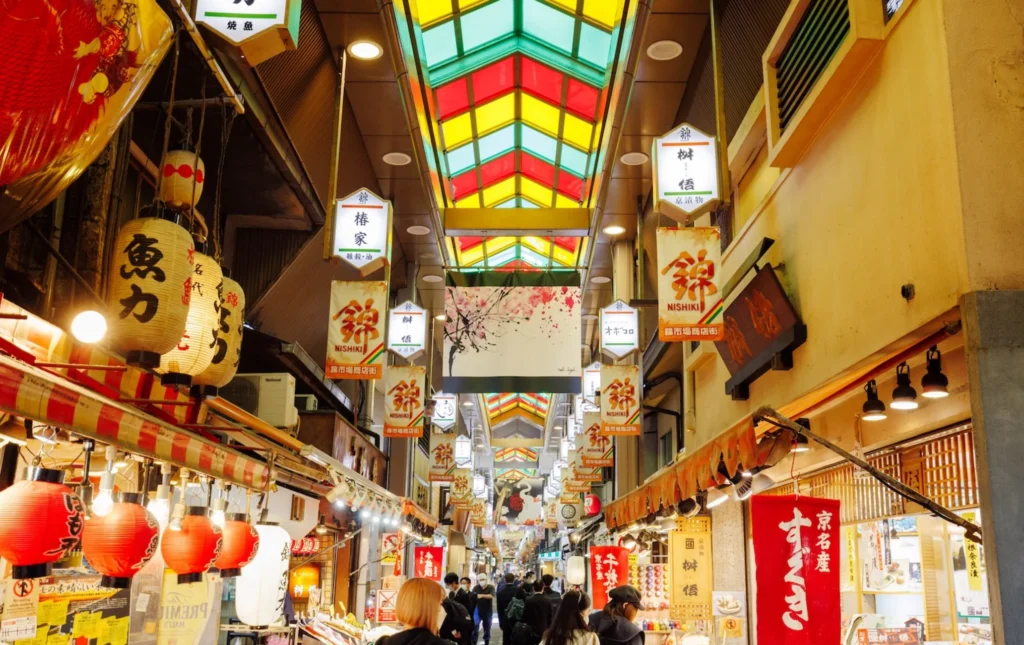
Nicknamed “Kyoto’s Kitchen” (Kyoto no daidokoro), Nishiki Market is a vibrant and historic culinary street in the heart of Kyoto. Stretching for five blocks under a covered arcade, this bustling market is a must-visit for food lovers, chefs, and curious travelers alike. Whether you’re after a taste of traditional Kyoto cuisine or just soaking in the sights and aromas, Nishiki offers a delicious slice of everyday life in the city.
The narrow, pedestrian-only street is lined with over 100 shops and stalls, offering a tantalizing variety of Kyoto specialties:
Tsukemono (pickled vegetables in wooden barrels)
Wasabi salt, matcha treats, roasted tea
Fresh sashimi skewers & soy milk donuts
Grilled eel rolls and takotamago (baby octopus with quail egg)
Artisan crackers, miso, yuba (tofu skin), and more
Many vendors offer free samples, making it easy to try before you buy – just remember not to eat while walking, as it’s considered impolite.
Best time to visit: Early morning or late afternoon (before 5pm) to avoid the crowds and ensure shops are open
Photography: Some stores don’t allow photos; always ask politely
Etiquette: Don’t walk while eating; enjoy your bites at designated spots or in front of the store
Souvenirs: Mixed among food stalls, you’ll find shops selling traditional Kyoto souvenirs
Nishiki Market dates back to the 14th century, with its origins as a wholesale fish market during the Edo period (1603–1868). Over time, it transitioned into a public retail market, and while it’s evolved to welcome tourists, its heart remains rooted in Kyoto’s culinary culture. Today, it’s both a daily shopping spot for locals and a cultural experience for visitors.
Founded by a swordsmith in the 1500s, Aritsugu is renowned for crafting some of the world’s finest Japanese chef knives. Selecting a knife here is a serious experience, and you can even have your blade engraved. Watch as the final sharpening is done by hand on a giant stone – a beautiful blend of tradition and craftsmanship.
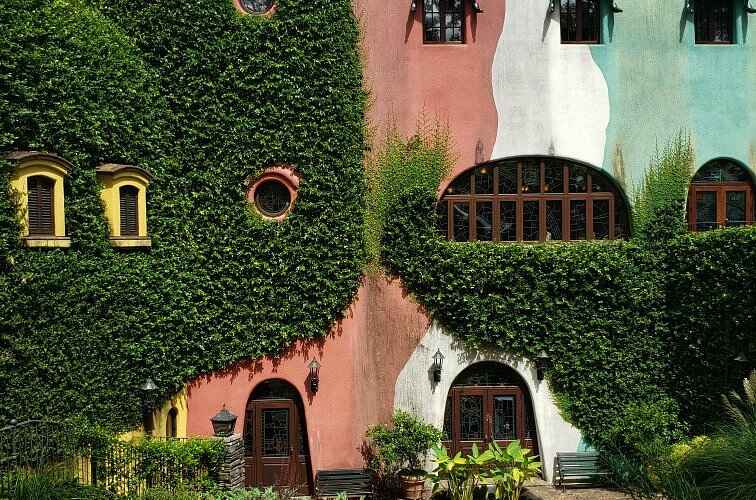
Step into the whimsical world of Studio Ghibli at the Ghibli Museum, a one-of-a-kind space in Mitaka, West Tokyo, where art, storytelling, and childlike wonder blend seamlessly. Designed by legendary animator Hayao Miyazaki, this museum is a celebration of the studio’s creative genius, behind beloved films such as Spirited Away, My Neighbour Totoro, Princess Mononoke, and Ponyo.
From the moment you enter, you’ll be swept into a fairy-tale setting:
Spiral staircases, stained glass, and whimsical architecture create a storybook atmosphere
A life-sized Catbus from Totoro (kids can climb in!)
Original sketches and storyboards from Ghibli classics
Saturn Theater: Watch exclusive Ghibli short films not available anywhere else
Interactive exhibits on the history and techniques of animation
A cozy reading room, curated gift shop, and café with Ghibli-themed meals and snacks
Advance booking is essential – tickets are not sold at the door.
From outside Japan: Book up to 4 months ahead through approved overseas travel agents
Within Japan: Purchase via Lawson’s online ticket portal (1 month ahead)
Visit Ghibli Museum’s official website for detailed instructions
Tickets are non-transferable; carry a valid photo ID
Prices:
Adults (19+): ¥1000
Age 13–18: ¥700
Age 7–12: ¥400
Age 4–6: ¥100
Under 4: Free
The Ghibli Museum sits on the edge of Inokashira Park in Mitaka.
From Kichijōji Station: A leisurely 30-minute walk through the park
From Mitaka Station: Take the Ghibli Museum Loop Bus from Bus Stop 9 (every 20 mins)
Round trip: ¥320
One way: ¥210
Whether you’re a die-hard Ghibli fan or a first-time viewer, the museum offers a magical, immersive experience that captures the spirit of curiosity and creativity Miyazaki’s films are known for.
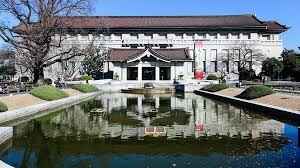
If you’re visiting just one museum in Tokyo, make it the Tokyo National Museum, located in the cultural heart of Ueno Park. As Japan’s oldest and most prestigious museum, it offers an unparalleled window into the country’s rich cultural heritage, housing the world’s largest collection of Japanese art.
The museum’s vast collections span millennia, from prehistoric Japan to the modern era, with highlights including:
Buddhist sculptures and samurai swords
Exquisite ukiyo-e woodblock prints
Ancient ceramics, armor, kimono, and more
Short on time?
Head to the Honkan (Japanese Gallery) — the second floor offers a must-see selection of masterpieces, ideal for a 1–2 hour visit.
Have more time? Don’t miss:
Gallery of Hōryū-ji Treasures: Rare masks, scrolls, and gilded Buddhist relics from the 7th century
Tōyōkan: Asian art including Chinese ceramics and Indian sculptures
Heiseikan: Fascinating displays from Japan’s prehistoric and archaeological past
Bonus: If you’re visiting in spring (mid-March to mid-April) or autumn (late October to early December), check if the museum’s traditional garden is open—featuring historic teahouses and a peaceful atmosphere rarely found in the city.
Café, restaurant, and coffee shop for a mid-tour break
Souvenir shop with elegant, Japan-inspired gifts
Founded in 1872, the Tokyo National Museum is Japan’s oldest museum, relocated to Ueno Park in 1882. Today, it stands alongside sister institutions in Kyoto, Nara, and Kyushu as part of the National Institutes for Cultural Heritage and is one of the largest art museums in the world.
Adults: ¥1000
Free for: under 18s and over 70s
Special exhibitions (often excellent) cost extra; however, they may have limited English descriptions
With its combination of depth, beauty, and historical value, the Tokyo National Museum is a must-see for anyone wanting to understand Japan’s artistic soul.
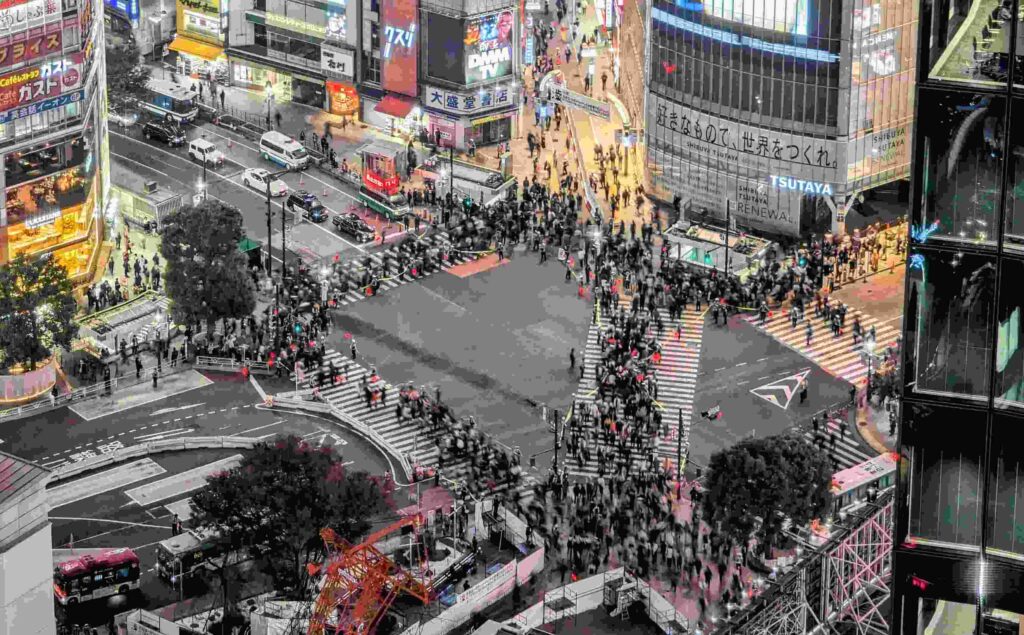
Often cited as the busiest pedestrian crossing in the world, Shibuya Crossing is more than just a Tokyo landmark — it’s an experience. With every traffic light change, thousands of people flow across from all directions in perfect, practiced chaos. It’s a symbol of Tokyo’s rhythmic energy, a place where movement never truly stops.
Best time: After dark on Friday or Saturday nights – the intersection glows under neon lights and is packed with energy.
Quietest time: After the last train departs from Shibuya Station, when the once-bustling crossing becomes almost deserted.
Mag’s Park – the rooftop of Shibuya 109-2 department store – offers one of the best aerial views of the crossing. It’s safe and ideal for photography, with plexiglass screens keeping your gear secure.
Other popular viewing spots include:
Shibuya Station’s Starbucks (often crowded, but with great views)
Shibuya Sky at Shibuya Scramble Square – offers panoramic vistas of Tokyo
Want to stay close to the action? Shibuya has a growing number of stylish accommodations:
Millennials Shibuya – 6 min walk; trendy capsule-style stay with smart tech features
Hotel Mets Shibuya – 12 min walk; cozy, modern, and near Shibuya Station
Mustard Hotel Shibuya – 15 min walk; minimalist, hip and traveler-friendly
From flashpacker hostels to capsule hotels with room to breathe, Shibuya makes a fantastic base for experiencing urban Tokyo’s nightlife and convenience.

More than just a quirky tourist stop, the Cup Noodles Museum in Yokohama celebrates the creative genius of Momofuku Ando, the inventor of instant noodles. This interactive and educational attraction offers a fascinating look at post-war Japan, the birth of convenience food, and the power of inventive thinking.
Momofuku Ando’s Work Shed (Recreation): Step into a faithful replica of the modest shed where instant chicken ramen was first created in 1958.
History of Instant Noodles: Follow the journey from the original chicken ramen to the 1971 innovation of cup noodles, with exhibits detailing Ando’s trial-and-error process.
Hands-On Experiences:
Chicken Ramen Workshop: Make ramen by hand in a fun, guided cooking class. (Additional fee: ¥800 for adults, ¥500 for children)
Cup Noodle Factory: Design your own cup and select your favorite soup base and toppings. (¥400)
Noodle Park Play Area: A large play space where children can explore the noodle-making process through physical activities. (¥400 for 30 minutes)
World Noodles Bazaar: Sample international varieties of noodles from different cultures.
Museum Shop: Purchase original merchandise, noodle-themed gifts, and special edition cup noodles to take home.
General admission: ¥500 for adults
Free entry for children
Tickets for workshops and the play area are purchased separately at the museum
Whether you’re a curious traveler, a design lover, or visiting with kids, the Cup Noodles Museum offers an imaginative and memorable experience rooted in one of Japan’s most beloved culinary inventions.
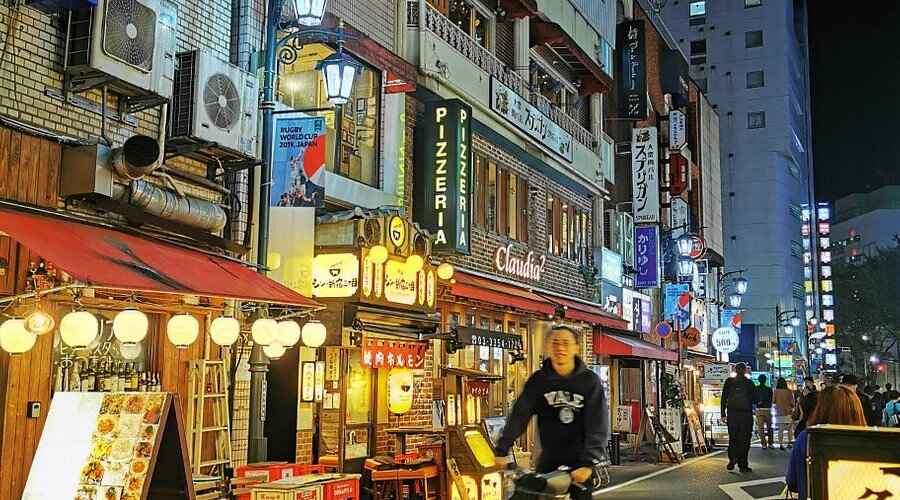
For over 50 years, Golden Gai has been an institution in Shinjuku, known for its narrow alleys lined with tiny, unique bars, often smaller than your average living room. These intimate establishments, each with its distinct style, are more than just places to grab a drink – they’re works of art created by the ‘masters’ or ‘mamas’ who run them. Golden Gai has long been a hub for artists, writers, and musicians, drawing creatives from all over Tokyo.
Tiny Bars: Each bar in Golden Gai is a world unto itself, seating maybe a dozen people. The bars range from quirky and retro to chic and modern, but they all maintain a cozy and personal atmosphere.
The Creative Vibe: Golden Gai has been a popular gathering spot for Tokyo’s artistic and literary crowd, where inspiration and conversation flow freely. Some bars still maintain the original clubby atmosphere, welcoming only regulars, while others are more open to newcomers, including tourists.
Atmosphere: The narrow, low-slung wooden buildings and the neon lights create a vintage charm that’s photogenic but must be appreciated quietly. It’s a good idea to check if photography is allowed before snapping photos, as many establishments consider this private property.
Cover Charges: Some bars charge a cover fee, usually ranging from ¥500 to ¥1500, which can often be seen on the door.
Explore the Alleys: The best way to enjoy Golden Gai is by strolling through its narrow lanes and choosing a bar that suits your mood. Many of the bars have English signs if they welcome tourists, making it easy to find a place to settle in.
Social Atmosphere: While some bars retain an air of exclusivity, others welcome visitors looking to experience Golden Gai’s legendary social scene.
Shinjuku is a central, convenient location for exploring Tokyo, and Golden Gai is easily accessible from several nearby hotels:
Hotel Gracery Shinjuku (7-minute walk)
Imano Tokyo Hostel (7-minute walk)
Shinjuku Granbell Hotel (5-minute walk)
Shinjuku is a popular area for tourists, but keep in mind that some budget hotels are located in Kabukichō, a district known for its nightlife and adult entertainment. While it’s generally safe, solo female travelers may feel more comfortable staying elsewhere.
WhatsApp us